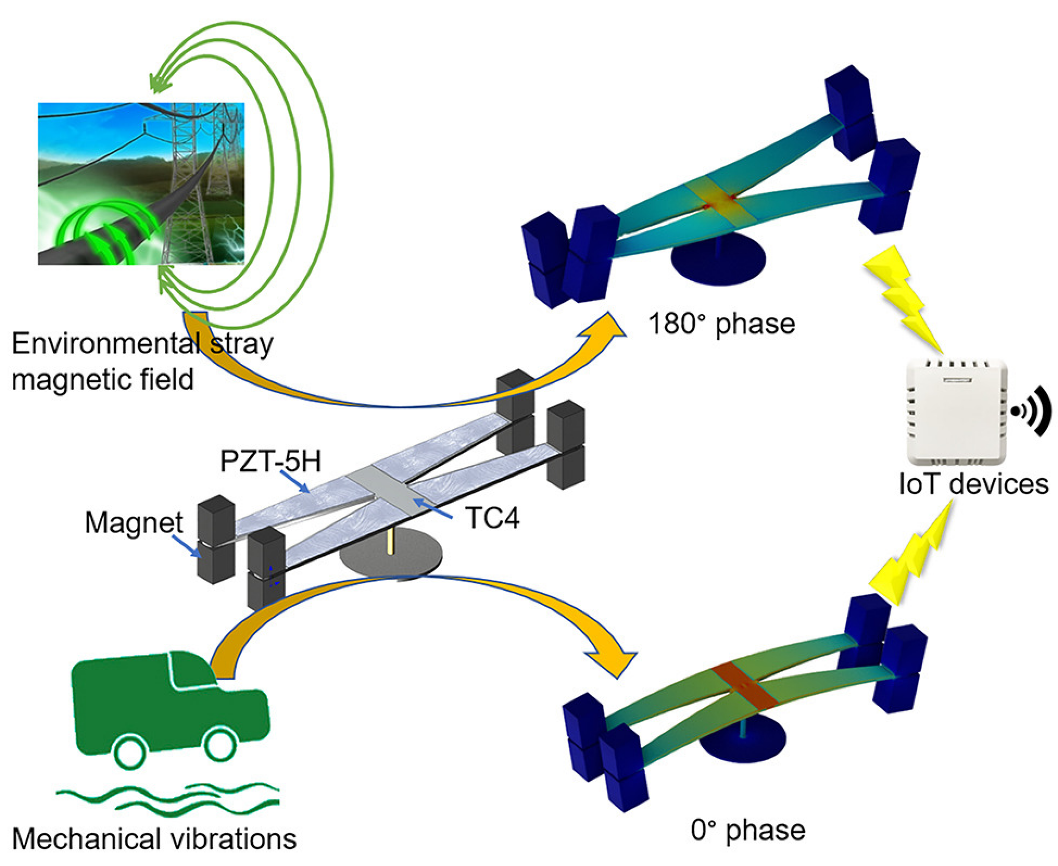Recently, professor Shuxiang Dong’s research team from the Advanced Research Institute of Shenzhen University together with his collaborators published their latest research finding online in Device, a sister journal to Cell, on August 8, 2023. The paper title is "A dragonfly wing-like energy harvester with enhanced magneto-mechano-electric coupling". In this work, inspired by dragonfly flapping-wing motion model, authors proposed a novel method for multi-modal magnetic field/vibration micro energy harvesting, which provided a new approach for more efficient collection of weak environmental energy and also a new insight for integrating biomimetic motion modes in the design of energy harvesters in the future. The first author of the paper is Dr. Jianglei Chang, and Professor Shuxiang Dong and assistant professor Penghong Ci are the corresponding authors. The collaborators included Associate Researcher Wei Peng and Dr. Yu Zhonghui from the same institute, as well as Professor Ming Liu and Associate Professor Xiangyu Gao from Xi'an Jiaotong University, and Professor Junqi Gao and Associate Professor Zhaoqiang Chu from Harbin Engineering University, etc.
The environment contains a wealth of various forms of energy, in addition to the light energy, heat energy, wind energy, wave energy that people has paid attention to, in fact, there are also overlooked vibration energy and magnetic field energy in the urban environment. These ubiquitous weak energies can actually be harvested and used for massive, self-powered sensors in Internet of Things in urban environments, thereby solving the various drawbacks caused by large-scale distributed power supply or massive chemical battery power supply. Although scholars have developed various piezoelectric and magnetoelectric energy harvesting devices, the power generation capacity for the collection of weak vibration energy and weak magnetic field energy in the urban environment is very weak and limited. In order to solve this problem, inspired by the efficient flapping method of two pairs (four) wing-like wings of dragonflies in nature, Professor Dr.Dong’s group and his collaborators designed a magneto-mechanical-electrical coupling micro-energy harvester (DWL-EH) that mimics the flapping wing vibration of dragonflies. The new device has a four-wing magnetoelectric cantilever structure and operates in two cross-symmetrical bending modes. This design greatly enhances the magnetic-mechanical-electrical coupling, which can effectively collect stray magnetic fields and weak vibration energy in urban environments. Under a weak magnetic field (HAC= 3 Oe, f = 50 Hz), a small DWL-EH achieves a record high output power of 25.89 mWavg, while also having the highest vibration energy harvesting power density to date. Even under a weak AC magnetic field of 1 Oe, the DWL-EH is capable of generating enough power to directly and continuously light 510 LED lights. In addition, the collected energy can be used to power multi-sensor IoT systems for real-time environmental monitoring. This study suggests that nature-inspired design principles may offer a more effective strategy for integrating energy harvesters with IoT devices in future urban environments.
This work was supported by the National Key R&D Program of China. Link to the original article:https://www.cell.com/device/fulltext/S2666-9986(23)00021-2.



